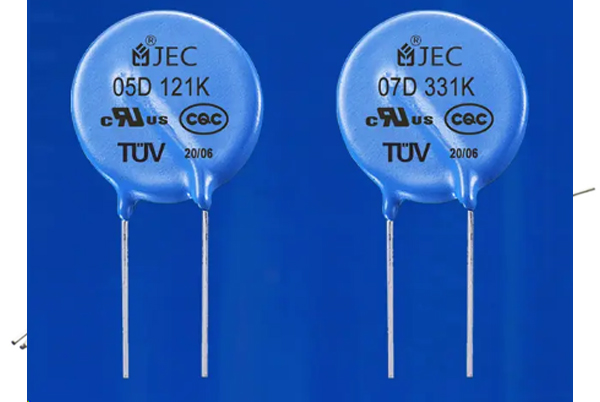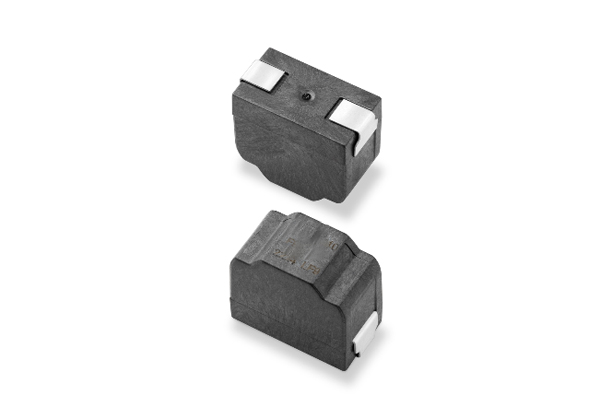Resistors are one of the most basic passive components in electronic circuits and are used for current control, voltage dividing, current limiting and so on. Resistors can be classified into various types according to their materials, structures and applications.
Classification of Resistors
Distinguished by resistance characteristics
1.Fixed Resistors
Characteristics: Fixed resistance value, not adjustable.
Common type:
Metal Film Resistors: High precision, good stability, used in precision circuits.
Carbon Film Resistors: Low cost, high versatility, suitable for general circuits.
Chip Resistors (SMD): Small size, suitable for high density PCB design.
Usage: Current limiting, voltage divider, pull-up/down and other basic circuits.
2.Variable Resistors
Features: Resistance value can be adjusted manually or automatically.
Common types:
Potentiometer: knob adjustment (e.g. volume control).
Trimmer Resistor (Trimpot): Used for circuit calibration, tool adjustment is required.
Digital Potentiometer: Adjustment by electrical signal (e.g. I²C), suitable for automation control.
Usage: Dimming, signal adjustment, circuit calibration, etc.
3.Special Resistors
Characteristics: Resistance value varies with environmental factors.
Common types:
Thermistor: Resistance value changes when the temperature changes (NTC resistance value decreases when the temperature rises, PTC resistance value rises when the temperature rises).
Light Dependent Resistor (LDR): The stronger the light, the lower the resistance value (e.g. automatic street light).
Voltage Dependent Resistor (VDR): resistance drops when voltage is too high, used for over-voltage protection.
Uses: Sensors, protection circuits, automatic control, etc.
Distinguished by material
- Carbon Film Resistors
Characteristics: lower cost, moderate resistance accuracy, general temperature stability.
Applications: Widely used in consumer electronics, basic circuit design, such as LED current limiting, signal voltage divider.
- Metal Film Resistors
Characteristics: High precision (±1% or higher), low temperature coefficient, good long-term stability.
Applications: precision instruments, measuring equipment, audio circuits and other occasions requiring high precision.
- Wirewound Resistors
Characteristics: High power (up to tens of watts), high temperature resistance, but poor high frequency characteristics.
Applications: power supply circuits, motor control, high current loads and other scenarios that require high power tolerance.
- Film Chip Resistors (SMD)
Characteristics: Small size, suitable for surface mounting (SMT), better precision and stability.
Applications: Smart phones, computer motherboards, high frequency circuits and other compact electronic devices.
- Ceramic Resistors (e.g. Thick Film/Power Type)
Characteristics: High voltage and high temperature resistance, suitable for harsh environments.
Applications: power adapters, industrial control systems, electric vehicles and other high power/high voltage devices.
Distinguish by Application
- Current Limiting Protective Resistors
These resistors are mainly used for controlling the current level and protecting the circuit. Typical representative is the fuse resistor, which not only has the current limiting function of ordinary resistors, but also can fuse to protect the circuit in case of overcurrent. They are commonly used in power supply inputs and various applications that require current protection.
- Voltage Sharing Resistors
The potentiometer is the most typical variable voltage divider resistor to realize voltage regulation through the resistor voltage divider network. These resistors are widely used in analog circuits for voltage regulation, signal amplitude control, and other scenarios, such as volume adjustment of audio equipment.
- Signal Stabilizing Resistors
Pull-up/down resistors are key components in digital circuits to ensure signal stabilization. They provide a defined logic level for floating pins and prevent false triggering. They are essential in MCU interface circuits and bus systems.
- Load Analog Type Resistors
Used for power testing, circuit debugging and other occasions to simulate actual load conditions. These resistors need to have good power tolerance and are commonly used for aging test and performance verification of power supply products.
- Current Sense Resistors
Shunt Resistors are used for current detection by measuring the small voltage drop, requiring accurate resistance value and good temperature stability. Widely used in power management, battery monitoring and other applications that require accurate current measurement.
- Circuit Connection Resistors
The 0Ω resistor is very important in PCB design although its resistance value is zero. It can be used as a jumper and retains flexibility for later debugging, making it a practical component in circuit board design.
Each functional resistor has its own specific application scenarios and selection requirements, engineers need to choose the right type of resistor according to the functional requirements of the circuit. In the actual design, it is often necessary to consider the resistance accuracy, power specifications, temperature coefficient and other parameters of the resistor indicators.

Advantages of resistors
1.Current limitation
Resistors in the circuit mainly play the role of limiting the current, to protect the other components in the circuit from excessive current damage.
2.Voltage and Current Sharing
Resistors can be used to divide voltage and current to help stabilize the voltage and current in the circuit and ensure the normal operation of the circuit.
3.Energy Conversion
Resistors convert electrical energy into thermal energy, and are indispensable energy-consuming components in electronic circuits. This energy conversion function makes resistors widely used in many circuits.
4.Design Flexibility
Resistors are available in a wide range of types and sizes, including fixed resistors and variable resistors (such as potentiometers), providing a wealth of options and flexibility in circuit design.
5.Cost Effectiveness
The manufacturing process of resistors is mature and relatively low cost, making them suitable for mass production and application.
Functions of Common Resistors
1.0Ω Resistors (Zero Ohm Resistors)
Used as a circuit jumper in PCB design to facilitate late debugging and circuit modification. More suitable for automated SMD production than traditional jumper wires to improve manufacturing efficiency. Mainly used in: circuit module isolation, test point connection, compatible design and other scenarios.
2.Current Limiting Resistors
Stabilizes the working current and protects sensitive components such as LEDs and vacuum tubes from current fluctuations. Precise selection of resistance value and proper power specification are essential. Mainly used in: LED driver circuit, tube amplifier, etc.
3.Pull-up/Pull-down Resistors
Provides a defined logic level for digital circuits and prevents malfunctions caused by MCU pin dangling. Resistance value selection needs to balance power consumption and response speed (usually 4.7kΩ-10kΩ). Mainly used in: I2C bus, key input circuit, digital interface.
4.Shunt Resistors (Current Detection Resistors)
Accurate current detection is realized by measuring tiny voltage drop (mV level). Low resistance value, high precision, excellent temperature stability. Main applications: power management systems, battery monitoring, motor control, etc.
5.Thermistors
NTC type: resistance value decreases with increasing temperature, widely used in temperature sensing and compensation.
PTC type: resistance value increases dramatically with temperature, commonly used in over-current protection and self-recovery insurance.
Application difference: NTC is used for temperature measurement, PTC is used for circuit protection.
6.Light Dependent Resistor (LDR)
Resistance value changes with light intensity (the stronger the light, the lower the resistance value). Low cost, easy to use, no need for additional driving circuit. Mainly used in: automatic lighting system, light intensity detection, security equipment.
7.High Power Variable Resistors
Adjust high current circuit parameters, such as motor speed, power supply output voltage, etc.. Made of wirewound or ceramic material, with excellent heat dissipation performance. Mainly used in: industrial control system, high power supply regulation, etc.

Resistor Symbols & Formulas
Resistor Symbols
1.Standard Fixed Resistor (IEC & ANSI)
IEC: ━━━━━━━━━━
ANSI: ~/~ ~
2.Variable Resistor/Potentiometer
IEC: ━━━━━━━━━━
╲
ANSI: ~/~ ╱~
3.Thermistor (Temperature-Sensitive)
━━━━━━━⊓⊔━━━━━━ (IEC)
4.Varistor (Voltage-Dependent)
━━━━━━━⋂⋃━━━━━━ (IEC)
Key Formulas
1.Ohm’s Law (DC Circuits)
Where:
V = Voltage (V)
I = Current (A)
R = Resistance (Ω)
2.Power Dissipation
P = Power (W)
3.Series Resistance
4.Parallel Resistance
For two resistors
Temperature Dependence
α = Temp. coefficient (1/°C)
RT = Resistance at temp. T
Color Code Chart (4-Band Example):
| Band | Color | Digit | Multiplier | Tolerance |
|---|
| 1st | Brown | 1 | ×10¹ | ±1% |
| 2nd | Black | 0 | | |
| 3rd | Red | | ×10² | |
| 4th | Gold | | | ±5% |
|
| Example: Brown-Black-Red-Gold = 10 × 10² Ω ±5% = 1 kΩ ±5% |
Relationship between different resistors
1.Complementary Functions
In circuit design, various types of resistors work together to achieve a more complete function:
Foundation and Adjustment Match
Fixed resistors provide the basic stability of the circuit, variable resistors realize the dynamic adjustment of parameters, and special resistors give the ability to perceive the environment, e.g. fixed resistors set the reference, potentiometers fine-tune the parameters.
Digital and Analog
Pull-up / pull-down resistors to ensure the reliability of digital signals, shunt resistors to achieve accurate measurement of analog current. For example: MCU systems use both pull-up resistors and current detection resistors.
2.Replaceability
Process Replacement
0Ω resistors and jumper wires, same function, but 0Ω resistors are more suitable for automated production. Plug-in and chip, according to the production process to choose the right package.
Performance Replacement
Metal film can replace carbon film to improve precision but increase cost, wirewound resistors to replace ordinary resistors to meet the demand for high-power, replacement needs to assess the cost, precision, power and other parameters.
3.Combined use
Sensing and Detection Combination
Thermistor + fixed resistor forming a voltage divider circuit = temperature detection.
Photoresistor + adjustable resistor = adaptive brightness control.
Precision Measurement Combination
Shunt resistor + op-amp = high precision current detection
Precision resistor + potentiometer = adjustable reference voltage source
Protection circuit combination
PTC resistor + fixed resistor = overcurrent protection
Varistor + Discharge Resistor = Surge Protection
These combinations reflect the synergistic effect of resistors in the circuit. In actual design, engineers need to be based on specific needs, balancing cost and performance, coordinating static parameters and dynamic adjustment, taking into account the basic functions and special needs.
Resistors in PCB
1.Current Limiting
Resistors can effectively limit the current of precision LEDs, integrated circuits and other components, preventing these components from being damaged by excessive current.
2.Voltage divider function
By connecting resistors in series, a voltage divider can be formed, enabling the power supply to output a lower voltage to meet the needs of the circuit.
3.Logic Voltage Stabilization
In digital logic circuits, resistors are often used in conjunction with pull-up/pull-down resistors to ensure that the circuit maintains a known logic voltage level when inputs are not driven.
4.Bias Supply
Resistors provide transistor amplifiers and other analog circuits with the proper DC bias voltage or current to ensure proper circuit operation.
5.Feedback Control
In analog circuits such as operational amplifiers, ADCs, DACs, etc., resistors provide precise control of gain and response through a feedback mechanism.
6.Pulse Shaping
Resistors combined with capacitors can form RC timing circuits for pulse generation and shaping.
7.ESD Protection
Resistors are effective in preventing damage to circuits caused by electrostatic discharges, protecting electronic equipment from damage.
8.Heating
Wirewound power resistors are able to efficiently convert electrical energy into heat and are commonly used in heating applications.
Application Areas
1.Consumer electronics, power management core components.
2.Automotive electronics, high reliability requirements.
3.communication equipment, signal conditioning key components. 4. industrial control, sensor signal conditioning, circuit protection core devices, power distribution important components.
4.Industrial control, sensor signal conditioning, circuit protection core devices, power distribution important components.
5.High-end applications
Medical equipment, precision current control.
Aerospace, extreme environment tolerance.
Military equipment, EMI suppression protection.
There are many types of resistors, each suitable for a specific application. Understanding their characteristics and functions helps to optimize circuit design, thereby improving reliability and performance. In practice, resistors should be selected based on circuit requirements, taking into account cost, accuracy and power handling capability.